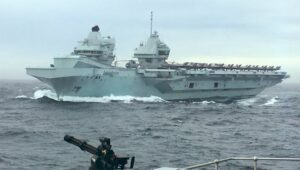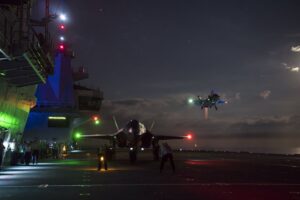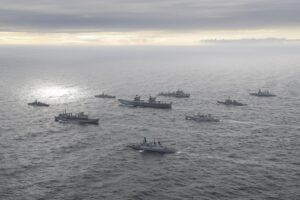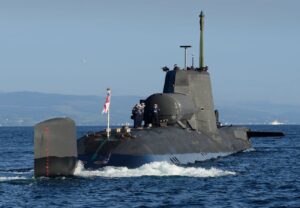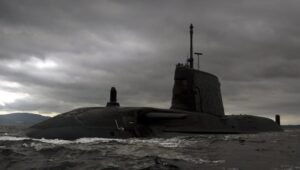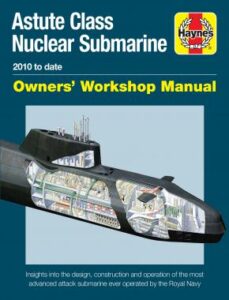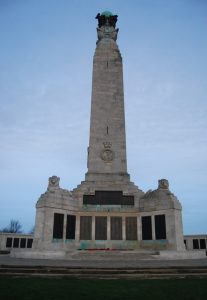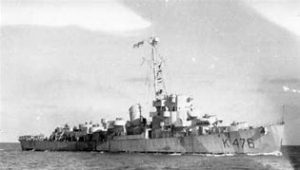AOB
A page for members’ contributions (contact sano.webmaster@gmail.com ), editorials and “any other business”
Data privacy – Membership lists
As members will recall, privacy legislation, notably the General Data Protection Regulation, governs the storage and use of their personal data. SANO’s Privacy Policy undertakes to keep such data confidential and destroy it one year after a member leaves.
Although, for these reasons, very few copies of membership lists have been issued outside EC for some years, there will still be some sitting in computers, paper folders etc. As this data is surplus to SANO’s requirements, and its retention not in line with the above undertaking, members holding such lists are requested to delete/destroy them.
Guides to the new carriers, Astute class submarines
UK Defence Journal has published guides to the Queen Elizabeth class carriers and Astute class submarines.
The policy origins of the QNLZ project, thinking behind the twin islands, statistics, crew facilities, radars, propulsion, munitions and aircraft all receive attention. The vessels will be utilised by all three services and will provide eight acres of sovereign UK territory. Both ships will be versatile enough for operations ranging from high intensity conflict to providing humanitarian aid and disaster relief.
The largest and most powerful attack submarines ever operated by the RN, the Astute class have provision for up to 38 weapons in six 21-inch torpedo tubes. The submarines can use Tomahawk land-attack missiles, with a range of 1,000 miles, and Spearfish heavyweight torpedoes. Astute is the first class of RN submarine not to be fitted with optical periscopes, instead employing video technology. It can be fitted with a dry deck shelter to allow special forces to deploy whilst the submarine is submerged (picture below left).
The guides are well-written, well-illustrated, clear and concise. George Allison provides most readable and informative summaries of these huge projects.
Read here, carriers, and here, Astute. Also available on the latter: Haynes manual – click on image below.
COBRA
An article “A short introduction to COBRA” appeared on UK Defence Journal, 22 September.
As the UK’s emergency response apparatus, COBRA convenes to handle national emergencies and other potentially disruptive or significant matters of national relevance, such as a major crisis hitting the UK or involving British nationals abroad. Although COBRA is named after ‘Cabinet Office Briefing Room A’, emergency meetings may take place at several sites. It is also known as the Civil Contingencies Committee.
COBRA co-ordinates the actions of departments within, and agencies of, the UK Government, in response to matters of national, regional or international significance with considerable consequences for the UK. Chaired by the Prime Minister or a delegate, usually a minister but sometimes an official, the committee’s composition depends on the nature of the emergency. Ministers, security and intelligence officials, military chiefs, emergency services representatives and those of the devolved administrations might be present.
A COBRA meeting was first convened in the early 1970s to prepare Edward Heath’s government’s response to the 1972 miners’ strike. It was also set up for handling a potential outbreak of war with the Warsaw Pact. Other events leading to COBRA meetings include the 1980 Iranian Embassy siege, 2000 fuel protests and mass flooding, 2001 foot-and-mouth outbreak, 11 September 2001 attacks and the impending strike by fire-fighters in 2002.
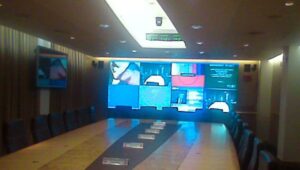
Read article here. Institute for Government item here.
Covert ops off Murmansk
A paper sent in by former Chairman Philip Sherwin recalls the inside story on certain Cold War Soviet submarine firings. Anon.
Stoker Ted Tilley – Shipley war hero
Jean Wright‘s series from Shipley, West Sussex, continues. Ted Tilley died on submarine exercise towards the end of WWI after 7 years service.
Read here.
The Royal Malaysian Navy – A history
A highly informative piece from former Chairman and Webmaster Pat Saunders. Covers the development of Malaysia and its need for naval forces; their manning, command structure, ships and bases; and associated formations.
Read here.
Fleet Commander’s strategic aims
A paper sent in by former Chairman Philip Sherwin sets out Top Brass plans for the Royal Navy as at June 2020. Circulated before a Dartmouth Term online drinks reunion, spoken on by Fleet Commander Vice Admiral Jerry Kyd CBE. Precise authorship not entirely clear but believed almost certain to be on good authority.
Another Shipley war hero
Jean Wright’s local researches with Shipley History Society have unearthed another touching tale (following earlier article on ERA Allmond, further below).
Read about Shipley war hero Sub Lt Brian Honeybun RNVR here. It subsequently transpired that Brian’s observer on that fateful day came from Shipley in Yorkshire.
The Royal Navy and slavery
A letter from Peter Mulleneux to the Telegraph on 12 June highlighted the Royal Navy’s anti-slavery patrols following this country banning the slave trade. As is usual with letters published in the press, it had been significantly abbreviated.
Here is Peter’s letter as published, followed by, as he puts it, “a few other points that should be highlighted when listening to the endless criticism of this country.”
“Sir: We should remember with gratitude the fact that, following the passing in 1807 of an Act of Parliament banning the slave trade, the Royal Navy carried out anti-slavery patrols off the west and east coasts of Africa, as well as off the Arabian Peninsula (where, incidentally, slavery had been practised for centuries).”
Peter’s unpublished points:
“The Africans themselves were heavily involved, simply rounding up their more troublesome neighbours and selling them to the Arab traders (middlemen) or to the Europeans, or to anyone else.
“The Moors, from the Barbary Coast, regularly raided along the coast of S.W. England for slaves, preferably blonde girls, for a horrid fate, and well-to-do folk for ransom.
“Most of the other European countries, and the Americas, were involved, directly or indirectly. But Britain was the first to ban the trade, and do anything about it, thanks to Wilberforce and his friends who struggled for twenty years to get the Act of 1807 through Parliament.”
Finally, a subsequent Telegraph correspondent wrote (17 June):
“Sir: As Boris Johnson says … There were black as well as white slave traders. History is more complicated than commonly depicted”.
Alfred Henry Allmond – Engine Room Artificer 4th Class
Jean Wright, well known at SANO and also Secretary of Shipley History Society, sent in the following carefully researched piece on a WWII naval hero commemorated on the West Sussex village’s war memorial.
“Alfred was born on 24th December 1915 at Camberwell, London to Arthur and Elizabeth Allmond. He married Dorothy Agnes Vallens at Colgate, Sussex in 1937. In 1939 the couple were living with his parents in Lewisham, London. According to the 1939 Register Alfred is listed as a plumber.
Alfred joined the Royal Navy after the declaration of war in 1939 and began his naval career as an Engine Room Artificer 5th Class before being advanced to ERA 4th Class. He served in HMS Gould, a Captain Class diesel driven frigate, built in the United States of America and assigned to the Royal Navy under the “Lease-Lend” programme..
On 29th February 1944, HMS Gould was operating as part of the First Escort Group when she, HMS Affleck, HMS Gore and HMS Garlies detected the German submarine U-358 in the North Atlantic north-northeast of the Azores. The group began a depth-charge attack which continued through the night and into 1st March 1944, the four frigates dropping a combined total 104 depth charges. Gore and Garlies were forced to withdraw to Gibraltar to refuel on 1st March, but Affleck and Gould continued to attack U-358. During the afternoon of 1st March, U-358 succeeded in torpedoing and sinking Gould with a torpedo known to the Allies as “GNAT” (German Naval Acoustic Torpedo). The Captain, Lieutenant Daniel Ungoed RN, together with six other officers and 116 ratings, died in the sinking. Only 14 of Gould’s crew survived. U-358 was forced to surface after 38 hours submerged and was subsequently sunk by gunfire from Affleck.
Alfred was one of those lost in action. He was 28 years old and left behind his widow Dorothy, a young son Michael and an unborn child. Dorothy gave birth to their second son Victor later the same month. Both sons attended Shipley School and gained places at Collyer’s School in Horsham for their secondary education. Dorothy lived in Shipley, Dragon’s Green and Coolham, and remained in West Sussex until her death in 2002. She remarried in 1954 and passed away at St Catherine’s Hospice, Crawley.
Alfred is commemorated on the Chatham Naval Memorial and in the Chatham Medway Unitary Authority Memorial Register. He was awarded the War Medal 1939 – 1945 and 1939 – 1945 Star.”
Naval shoreside and other military firefighting – A history
Found in another association’s newsletter is the interesting article below on the history of UK military, especially naval, firefighting. It originated on the website of the Firefighters’ Memorial Trust, here amended only to re-arrange the order in which the individual services feature.
“The Royal Navy
Following a fire in Portsmouth Dockyard in 1664 the first fire engine was authorized by the Navy Board and was purchased at a cost of £20. As a result of the passing of the Metropolitan Police Act in 1860, the Metropolitan Police assumed the organization and manning of Fire Brigades in all Royal Navy Dockyards, which were organized on 5 Divisions headquartered on Woolwich, Portsmouth, Devonport, Chatham, Sheerness and Pembroke.
Fire protection in Royal Navy Dockyards came under close scrutiny after a disastrous fire in July 1919, at the Royal William Victualing Yard, forming part of the Dockyard at Plymouth, In 1922, the responsibility changed to that of the newly formed Royal Marine Police.
Leading up to World War 2, the fire protection in Royal Navy land bases was a mixture of organised Fire Brigades, mainly in HM Dockyards under the control Royal Marine Police with other Royal Navy personnel performing fire piquet duties at locations not having an organized fire brigade. In some of the Dockyards, duty drivers from the Engineering Department and the duty Royal Navy personnel piquet augmented the permanent Royal Marine Police Firemen. Firefighting on Fleet Air Arm bases was, like that at Royal Air Force bases, seen to specialist with specialist training and equipment given to those engaged for aircraft crash firefighting duties.
Each of the designated HM Dockyards had a Fire Brigades headed by a Chief Fire Officer, under the overall control of the Admiralty. It was clearly expected that in the event of war, Naval Dockyards in particular, would be the focus of attack from the air and so fire protection arrangements were enhanced. Auxiliary Firemen were recruited from within the dockyard workforce.
The decision was taken in June 1942 to form the ‘Royal Naval Fire Force’, (RNFF), utilising serving personnel with firefighting experience, (Stokers), and the transfer of those having previous fire service experience, particularly those who had previously served in Local Authority Fire Brigades during the air raids of 1940/41 and also, those who had seen the early days of the National Fire Service (NFS), combining with the established Dockyard Fire Brigades, where they existed.
The RNFF was responsible for fire prevention and firefighting in Royal Navy shore establishments throughout the UK and also overseas. They utilised many of the same range of vehicles and pumps as issued to the NFS, including turntable ladders as well as crash tenders for aircraft incidents and also fireboats. The designation ‘Fireman’ was not adopted, using instead the designation ‘Stoker’, together with ‘Petty Officer’ and the usual Royal Navy officer designations.
In September 1945, the Admiralty recommended that, with the cessation of hostilities, it was no longer economical to retain the Royal Navy Fire Force and that it should be disbanded. It was further recommended that at Naval Air Stations, specialist teams would be retained to cover the flying operations of the Fleet Air Arm. The list of major establishments identified as requiring fire protection arrangements in addition the Dockyards included the RN Armament Depots, Victualing Depots, Oil Fuel Depots, and Store Depots. At this time HM Dockyards existed in Portland, Portsmouth, Chatham, Devonport, Sheerness, Pembroke, (Repair Base) and Rosyth.
This resulted, in February 1946, in the RNFF being disbanded and the responsibility for fire protection in designated establishments was subsequently handed to the Royal Marine Police
In October 1949, the Admiralty Constabulary was established and members of the Royal Marine Police, the Royal Marine Special Reserve and the Admiralty Civil Police were merged into one Force
During the Autumn of 1956, a review of the provision of fire protection in HM Dockyards considered the organisation of the Fire Brigade under the control of the Admiralty Constabulary, which had been established and built up gradually since the end of World War 2. This review resulted in the reduction of a firefighting capability at many Royal Navy establishments.
The main focus then fell on the four Dockyard Fire Brigades remaining at Portsmouth, Devonport, Chatham and Rosyth. Local Authority Fire Brigades served all other RN establishments with some, particularly the Armament Depots and Storage Depots, having one or two personnel retained for instructional duties and fire equipment maintenance. In April 1958, there was a further reduction in the number of personnel at those locations having dedicated firefighting personnel, together with a corresponding reduction and disposal of firefighting vehicles. In November 1959 it was decided to withdraw the fire brigade at Rosyth for a period of 6 months, with a view to this being a permanent withdrawal there and at the other three HM Dockyards. The result was that, all of the remaining Admiralty Police Fire Brigades were disbanded by 1968 with some officers being retained as a newly formed Admiralty Fire Prevention Service, having the responsibility to advising on fire prevention and performing instructional duties, but having no firefighting role.
It is often quoted that the last Police Fire Brigades disappeared with the formation of the National Fire Service and this is indeed true in respect of Local Authority Fire Brigades, but the Royal Navy can claim to have had the last functional Police Fire Brigade.
Firefighting at the Royal Navy Air Stations and Helicopter Bases continued to be seen as being of a specialist nature and left to the Aircraft Handler Branch and as such did not come under the scope of the far-reaching review.
The Army
Prior to the outbreak of World War 2, the Army had no separate Fire Service as such, although ‘Garrison Fire Brigades’ were established at Aldershot, Blackdown, Bordon, Bulford, Catterick and Colchester. A further Brigade was later authorised for Bovington. These Fire Brigades were commanded by Non-Commissioned Officers, (NCOs), seconded from their regiments and supported by 16 to 30 civilians. Ordnance and other depots made their own arrangements for manning any fire engines they had.
In July 1941, a Fire Fighting Wing within the Pioneer Corps was formed. This Wing absorbed all the men engaged on full-time fire service duties. Members of the Army Fire Service, operating under the umbrella of the Pioneers Corps, were subsequently established throughout many theatres of war, including the operation of many fireboats.
On 1 July 1946, the Pioneer Corps Fire Fighting Wing was disbanded and the whole of the Army Fire Service absorbed into the Royal Army Service Corps (RASC). In 1961, it was civilianized and became part of the Royal Army Ordnance Corps.
The Army Fire Service continued in name until the creation of the Defence Fire Service in 1990 and later the Defence Fire & Rescue Service in 2004.
The Royal Air Force
With its origins dating back to 1921, the RAF has long had a force of dedicated firefighters providing fire protection at the various RAF stations around the UK and elsewhere in the world. With the outbreak of World War 2, many more RAF airfields required firefighting protection around the world, including the provision of protection as part of RAF aircraft movements in support of advancing troops or at forward bomber bases in active theatres of war. Post World War 2, the provision of fire protection at RAF establishments continued with a mixture of RAF career and civilian employed firefighters.
Joint Service Organisation
In April 1990 the ‘Defence Fire Service’ was created by the amalgamation of the fire protection services of the Army, the Royal Navy and the Royal Air Force and the Procurement Executive Fire Service, although the very specialised nature of all 3 Military services resulted in the continuance of certain specialist separate roles, including the specific needs of the Royal Air Force and Fleet Air Arm, who maintained their own trade firefighters.
It was re-named the ‘Defence Fire & Rescue Service’ in 2004. A later further reorganisation in 2006, resulted in the creation of the ‘Defence Fire Risk Management Organisation,’ (DFRMO), encompassing the members of the Defence Fire & Rescue Service, the Royal Air Force Firefighters and the Royal Navy Aircraft Handlers Branch
Today the firefighters of the Defence Fire Risk Management Organisation continue to serve at designated military establishments, including deployment to protect the assets of Military forces in action in theatres of war or on deployment as part of peacekeeping duties.”
HMS Victory – Disappointing visitor experience
Andrew Carslake drew our attention to a letter from a disgruntled visitor to Victory, printed in the December 2019 edition of the Nelson Society journal. The author reports his visit as “a total disappointment”, citing the masts having been missing for years and not due to be replaced until 2034, no clear signage to lead visitors to the ship or, once there, which part of the ship they are in or how it functioned, no-one on board who could answer questions, Nelson’s cabin being empty of furniture, and no access to the upper deck. He adds that many reviews on TripAdvisor reported similarly, and that his experience was in stark contrast to Warrior, Mary Rose and the Submarine Museum.
The journal also reports the closure of the Nelson Museum at Great Yarmouth and concerns for the deteriorating condition of the Nelson Monument at Portsdown Hill.
Any comments from SANO members?
National Shipbuilding Strategy
Philip Simons commented on the National Shipbuilding Strategy report, featured earlier in Sussex Navy News.
MoD had commissioned a report by Sir John Parker to inform a National Shipbuilding Strategy aimed at driving changes in the naval shipbuilding sector. Sir John’s report said the UK has a vibrant shipbuilding and marine engineering sector, improving competitiveness and innovation. However, building RN ships takes too long and suffers from lack of pace – affecting timescales and costs – a flawed governance system and unclear project ownership and responsibility. More attention needs to be paid to export potential, production-friendly designs and avoiding unnecessarily expensive standards. He made 34 recommendations.
Philip Simons commented:
“Sir John Parker’s report on naval shipbuilding is a no-nonsense review of all the ridiculous practices that have plagued our naval shipbuilding practices, capability and efficiency, it seems for ever.
What he suggests is precise and sensible, however I haven’t the confidence to think that such a radical reform of such entrenched bad practices is achievable. It will take a lot of cajoling and reform of staid thinking and settled practices, before this could come to fruition.
However, to save the shipbuilding industry in this country and especially to continue building our own warships, then this needs to happen. Watch this space!!!!!”
Parker Report here. A handy summary, in the form of a covering letter, here.
The Bomber NAVCENTRE
SANO Chairman Richard Stanton, a seasoned submariner, sent in a pair of articles from the Ship’s Magazine of RN Polaris submarine HMS Renown, 1968 – 96, setting out 2 senior rates’ views on this and related weighty matters.
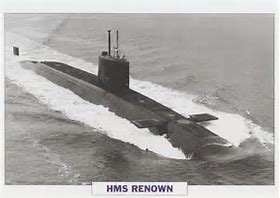
In view of the number of in jokes in the articles (which I mostly failed to spot – Webs), our leader is prepared to explain all, over quantities of alcohol bought at enquirers’ expense in any suitable (TN22) hostelry.
Read on below.
“The Bomber NAVCENTRE – Two Views
The two articles below appeared in the Hi Ho Journal, the Ship’s Magazine of Renown (Stbd). The Hi Ho Journal was produced weekly when at sea, some 20 copies being photocopied and delivered to departments and messdecks. At least two sets still exist, one donated to the Submarine Museum by the Editor, POCEL Eric Wilding, and the other by the family of the late CREL Denis Elgar.
‘The NAV CENTRE’, first below, appeared in the 7 March 1969 edition. The author was CRMech Tony Marvin (AJM). The second article, ‘THE NAVCENTRE (The Full Inside Story)’, was the response the following week, written by Denis Elgar under the pen-name Ragle.
The NAV CENTRE by AJM
Though this compartment, aft of the Control Room on 1 deck, serves more purpose than just POLARIS, it is essential to the Polaris Weapon System because it supplies vital information to the MCC (Missile Control Centre) to allow the DGBCs (Digital Geoballistic Computers) to compute the “Missile Ballistic Problem”, i.e. how to get the missile to land at the right place. The NAVCENTRE crew you will know from your Commissioning Brochures, or if you never receive this seaview impression of HMS RENOWN, your religious service sheets. This goes for the rest of us too.
They have the problem of determining at any time the exact position of the ship! To this end they have SINS (Ship’s Inertial Navigation System), which relies upon accelerometers to measure and update a digital computer every time there is a change in the ship’s position. To aid and verify this are the British Decca Navigator and the American LORAN, which give positional fixes. There is a conventional ship’s gyro and a satellite tracking system to ensure, guarantee if you like, that at any finite time the DGBCs know exactly where our ship is for computing the Ballistic Problem.
The Navigation System is connected to the Polaris Weapon System in two separate and distinct ways.
- The simplest: It is used by the alignment group in an optical manner to act as a reference to the “Trollies” in the MCC Upper Level and thus the missiles to measure any loading errors; also to cause the weapon NOT to be released if any flexures due to deep dives and bumps etc would cause the missile to go to the wrong place. A measure of the loading errors is needed and used in the DGBCs to compensate the missile flight for this mechanical loading error.
- This is most important to me: The navigators supply my compartment, the MCC, with the latitude and longitude of the ship’s position for use in the DGBCs to compute velocities to be gained.
Also sent to the MCC is a reference of ship’s heading, pitch and roll, which are used to make corrections to the missile, making it appear to the missile itself that it is taking off from a stable platform, i.e. a solid launch pad instead of a submarine.
Should the navigation team at any time doubt the accuracy of this information sent to the MCC, which incidentally is checked via WISSERT (WSRT – Weapons System Readiness Test) daily, they can put a hold on the whole weapon system until once again they are confident the DGBC is able to compute valid information.
Author’s CV:
Tony Marvin (AJM), joined the RN in June 1952. He trained in Radio and Radar in HMS Collingwood. Served in various ships and Shore Wireless Stations with various promotion/specialist training until joining Submarine Service in 1965.
Trained in the Polaris Weapon System at Dam Neck, Virginia, USA. Joined the Renown programme at Cammell Laird, Birkenhead, remaining with her during the Build, Work-ups, Missile Tests and several patrols to refit at Rosyth in May 1973. Joined Revenge in June 1973 to Refit September 1974, then back to Renown September 1974 to January 1975. This period involved many Patrol periods as Missile Fire Control Chief.
January 1975 to January 1976 served in Neptune, Dolphin and Nelson to retirement and onto second career in the computer industry, to third career: Retirement and voluntary activities.
THE NAVCENTRE (The Full Inside Story)
I was amazed, nay astounded, that some person, namely AJM, whose name does not appear on the roll of honour on the Nav Shack Door, and is consequently not a welcome visitor to that place, should dare to write about its function and purpose, neither of which are understood by many on this submarine (or ashore for that matter); but in the interests of further education and Part 3 qualification I will give you all for free the full inside story, uncleared by customs, censors or security.
The Navcentre is manned (I use the term loosely) by a very exclusive types of Homo sapiens, who are recruited or press ganged from the “Ellarewe” tribe inhabiting the primitive rain forests of the North Finchley Bypass. Once recruited they are trained (house) regardless of expense. This is a most difficult process, invented in the USA by Professor Neck, hence their expression of disgust ‘Dam Neck’.
The Navcentre is situated just abaft (sailoreze for behind) the Control Room. Its domed roof is painted and tastefully embellished with festoons of wires and pipes, and it presents a sight not to be missed by any tourist. It has been compared unfavourably with that of the Sistene Chapel, but on contemplation does grow on one while on watch.
Suspended neatly from this magnificent scene are two large bowls, of washing up variety. Contrary to popular belief these are not the heart of the system; one is in the process of being constructed into a breeding cage for budgies, and the other contains umpteen gallons of fermenting home brew for the Chiefs’ Mess.
The real heart of the system comprises two pieces of ‘lodestone’ and a boy scout’s compass removed from my son’s toy box. These lodestones are suspended Fore & Aft and Athwartships (Chinese Style) on pieces of electrical string. Cammell Lairds took six months setting it up; it should take the duty watch of chefs about ten minutes. Now as you all know “A drunken stone gathers no moss when it is moving”, and these stones are loaded. Now providing moss can be grown on these stones, any movement of the boat can be measured by the growth of the moss on them. Thus by careful measurement of the moss length on the sides of the stones, extremely complicated mathematics, a quick shufti through the periscope and a look at the boy scout’s compass, we can tell at any time exactly where the ship is. The moss used is of a very special type, and requires an exact controlled environment to ensure a constant rate of growth when not moving. Now, every 8 hours or so this moss is too long to be measured by our yardstick or guessing stick, which depends on tile colour of the watch on. The stones are then shaved with an electric razor. To save waste the shavings are then dried, ground and powdered and added to the tea; hence our preference for coffee, but it does save a few pennies on the catering allowance.
This and a large number of boxes – black, grey and red fablon covered – comprise the Nav Sub system. There are a large number of computers, each with its own specialised function, i.e. Missed Meals money, travelling expenses, RA, Football pools, watchkeeping lists, etc. The cupboards contain a large supply of paper and pencils for working out ‘Anagrams’ in the various crosswords attempted by the staff.
The very high sheen on the floor is entirely due to the assistance of the Forward ERA and his staff, who supply seemingly unlimited quantities of oil (Hydraulic A.P.111111111) at any time Day or Night. Another outside supply, and for which thanks are given to the After Ends, is chilled water. This is required to cool the Coca Cola of those who were brainwashed in the States, when it’s 110 degrees down aft and the phone rings; remember, Coca Cola at any temperature above 60 degrees doesn’t taste at all nice unless your oppo’s tot is in it. (Moral: no chilled water, then give us your tot).
Some of you are fortunate enough to supply us with a wireless aerial or help drape one around the missile compartment. The reason this aerial is required is that we must have constant reception on Radio One or we won’t be able to keep our top 20 chart up to date. A loss of reception of just three minutes could mean missing a record and, as a consequence, us dropping a record from the list. If you consider your duty arduous, try listening to pop music for four hours, or even counting lists to determine which is No. 1. (No prizes are offered for guessing who is No. 1 on this boat). A large number of loudspeakers are also fitted, but their quality of reproduction leaves much to be desired. It is hoped at the first refit to have the Navcentre wired for sterophonic sound. 3D video has been suggested, but it is felt that in the interest of National Economy their Lordships would not be able to approve it. Various telephone systems are fitted to allow us to call our reliefs, book late meals from the galley or complain to various parts of the ship whenever we feel so inclined.
The whole reason for having a Navcentre completely escapes me; the most obvious one is to allow the Officer of the Watch to nip in for a crafty burn without letting the watchkeepers have one all round. The list of names on the door is not, as you may have been led to believe, for security but we are limited to the number of cups of coffee we can bring through the Control Room per watch. Some members of the staff get nasty when they dip out on our perpetual coffee boat.
RAGLE
‘Ragle’ was the most commonly appearing pen name used in the Hi Ho Journal, by CREL Denis Elgar. This article is published by kind permission of his widow, Vivienne.
CREL Denis A Elgar was born in 1931. Denis served with Eric Wilding (Editor of the Hi Ho Journal) in HMS Tiger before joining boats. Already married to Vivienne, he joined submarines in Dolphin in January 1966. With Eric, he stood by Renown building in Birkenhead and did the work-up, DASO and first two Starboard crew patrols, making his home in Helensburgh. Denis was drafted to HMS Forest Moor in Yorkshire in late 1969, then HMS Neptune in 1970. Leaving the RN in 1972, he worked at RAF Northolt and then for North East Gas. Sadly, he died in 1997. Like Eric Wilding, he retained copies of the Hi Ho Journal after leaving Renown, these now being split between his two sons, Simon and David. Denis was a talented and unassuming author.
Sadly, Eric died in October 2018.
3 Comments
davidjparry@xxx.co:
SINS …as I was taught!
The inertial navigation system, and hence the vessel, knows where it is at all times. It knows this because it knows where it isn’t. By subtracting where it is from where it isn’t (or where it isn’t from where it is depending on which is the greater) it obtains a difference or deviation. The internal guidance system uses deviations to generate corrective commands to direct the vessel from a position where it is to a position where it wasn’t. Consequently, the position where it was is now the position where it isn’t.
In the event that the position where it is now is not the same as the position where it originally wasn’t the system will acquire a variation (variations are caused by external factors and discussions of these are beyond the scope of this simple explanation).
The variation is the difference between where the vessel is and where the vessel wasn’t. If the variation is considered to be a significant factor, it too may be corrected by the internal guidance system. The vessel must now know where it was.
The ‘thought process’ of the equipment is as follows: because a variation has modified some of the navigation information which the vessel acquired, it is not sure where it is. However, it is sure where it isn’t and it knows where it was. It now subtracts where it should be from where it wasn’t (or vice-versa) and by differentiating this from the algebraic difference between where it shouldn’t be and where it was, it is able to obtain the difference between its deviation and its variation; this difference being called error ….
tobs:
Fascinating. If the Navcentre really did rely on Decca and Loran, Moscow need not have trembled – the missiles would have landed somewhere in Siberia. Love the Parry dit!
alanjonesxxx@xxx.co:
Hydraulic oil at this time was PRI 1192, which stands for Pennsylvania Research Institute, PROJECT 1192. Later britishised to OX 30.”
